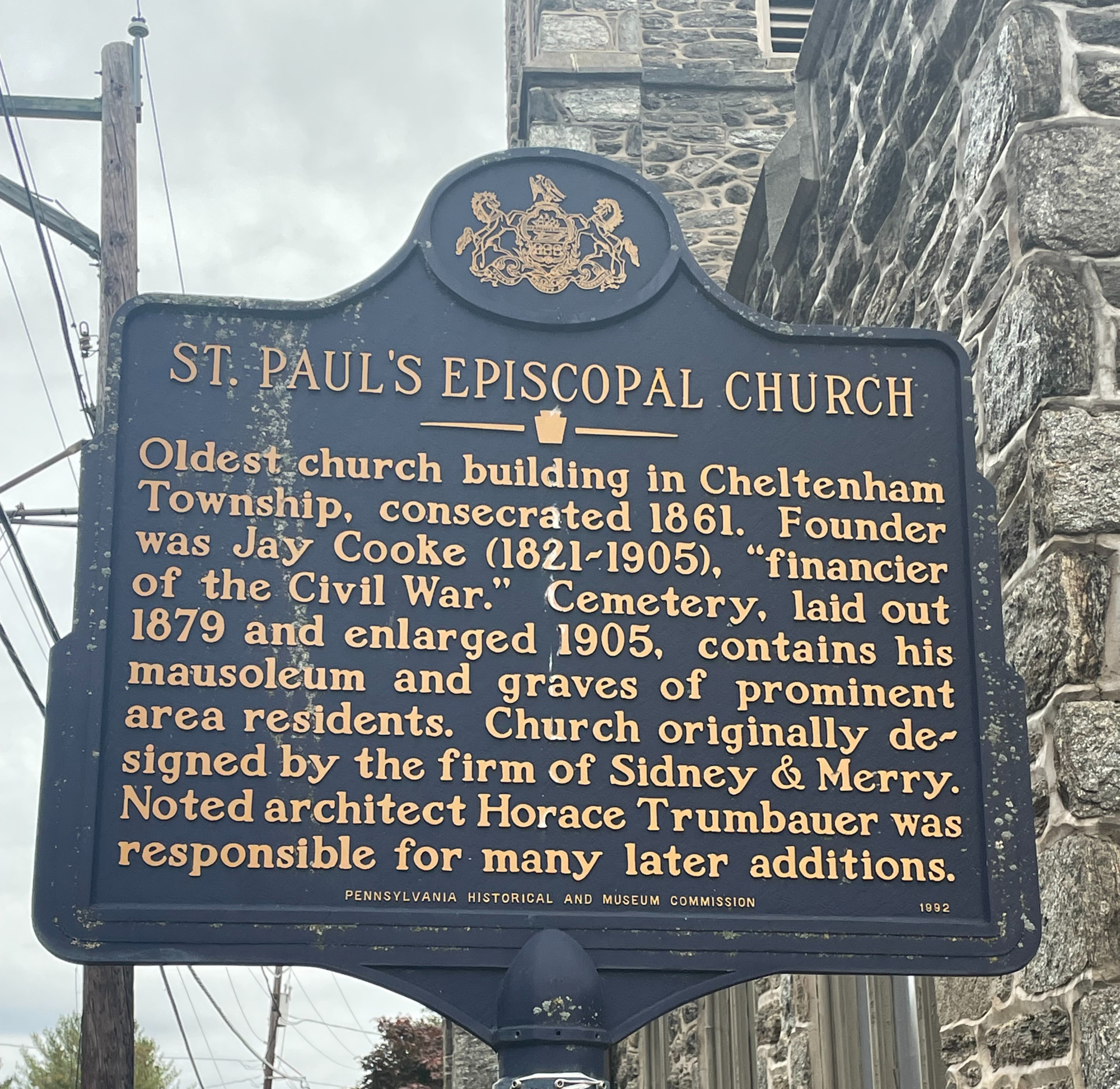
Our church is a local gem and a national treasure. Multicultural roots grow deep at St. Paul’s Elkins Park.
The oldest church in the Cheltenham area, and one of the most significant Abolitionist and Civil War historic sites in the Delaware Valley, St. Paul’s was started in 1851 and built in the early 1860s by the generous vision of financier and abolitionist, Jay Cooke. Cooke was called the “Financial Savior of the Union” for his work selling war bonds. Around three billion dollars in war bonds passed over his desk, which now sits in the entrance to our church. Quaker social activist Lucretia Mott was a good friend and a fellow abolitionist. The two reportedly hid escaped slaves at an Underground Railroad Station on the nearby Cooke estate.
During this time, St. Paul’s held the only regular worship services at nearby Camp William Penn, where troops of color were trained for the Union Army. After the Civil War, our congregation was highly active in Reconstruction and Freedman’s work.
During the Gilded Age (around 1870 to 1912), the storied Widener and Elkins families were active members. Artist Louis Comfort Tiffany designed and produced many of our glorious stained glass windows; including two as memorials for George and Harry Widener who went down in the Titanic. During this time, St. Paul’s was refurbished and expanded by Julian Abele, the first African-American architecture graduate at the University of Pennsylvania, and the unsung and storied chief designer for famed Philadelphia architect Horace Trumbauer.
Amelia Earhart attended services at St. Paul’s while a student at the Ogontz school in 1916-17.
In 1925, St. Paul’s basement was the birthplace of religious radio station WIBG (“Why I Believe in God”) Radio 99, which eventually became THE Philadelphia Top 40 radio station playing both White Rock and Black Rhythm and Blues music during the height of the Civil Rights era in the 1950s and 60s.
Past leaders have included The Rev. Marjorie Farmer, noted Philadelphia teacher and Episcopal priest, who served as assistant Rector of our church; as did the Rev. Emmanuel Chemengich, founder of Mwamba Ministries in Kenya. Civil rights, anti-poverty, and antiwar activist the Rev. David Gracie was Rector here; as was the Rt. Rev. Pierre Whalon, now Bishop of the Convocation of Episcopal Churches in Europe, and the Rev. Marissa Herrera, from Cuba.
Today’s St. Paul’s is a beautiful and spiritual place built on these deep, historic roots.
